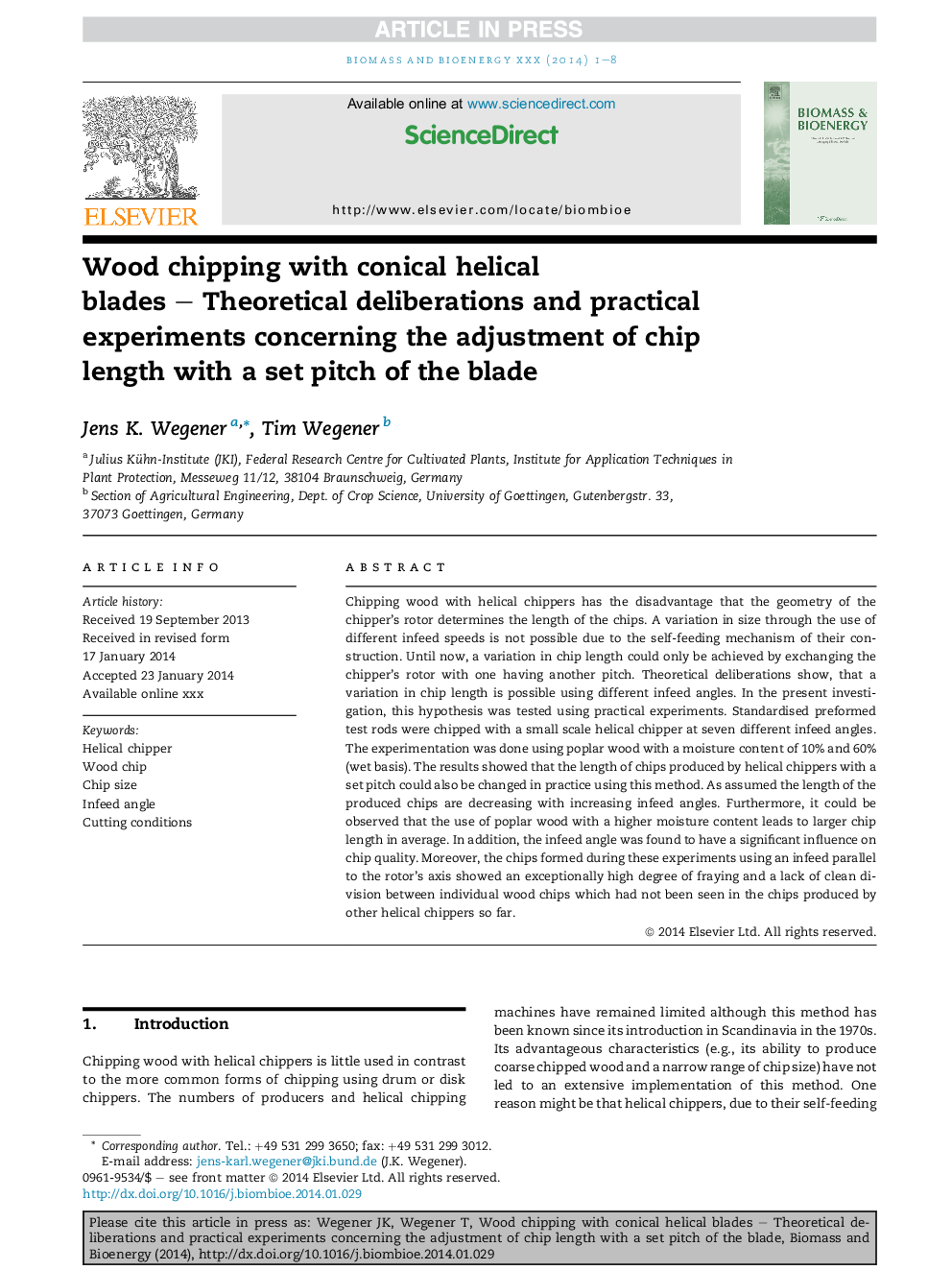| Article ID | Journal | Published Year | Pages | File Type |
|---|---|---|---|---|
| 7064696 | Biomass and Bioenergy | 2014 | 8 Pages |
Abstract
Chipping wood with helical chippers has the disadvantage that the geometry of the chipper's rotor determines the length of the chips. A variation in size through the use of different infeed speeds is not possible due to the self-feeding mechanism of their construction. Until now, a variation in chip length could only be achieved by exchanging the chipper's rotor with one having another pitch. Theoretical deliberations show, that a variation in chip length is possible using different infeed angles. In the present investigation, this hypothesis was tested using practical experiments. Standardised preformed test rods were chipped with a small scale helical chipper at seven different infeed angles. The experimentation was done using poplar wood with a moisture content of 10% and 60% (wet basis). The results showed that the length of chips produced by helical chippers with a set pitch could also be changed in practice using this method. As assumed the length of the produced chips are decreasing with increasing infeed angles. Furthermore, it could be observed that the use of poplar wood with a higher moisture content leads to larger chip length in average. In addition, the infeed angle was found to have a significant influence on chip quality. Moreover, the chips formed during these experiments using an infeed parallel to the rotor's axis showed an exceptionally high degree of fraying and a lack of clean division between individual wood chips which had not been seen in the chips produced by other helical chippers so far.
Keywords
Related Topics
Physical Sciences and Engineering
Chemical Engineering
Process Chemistry and Technology
Authors
Jens K. Wegener, Tim Wegener,
